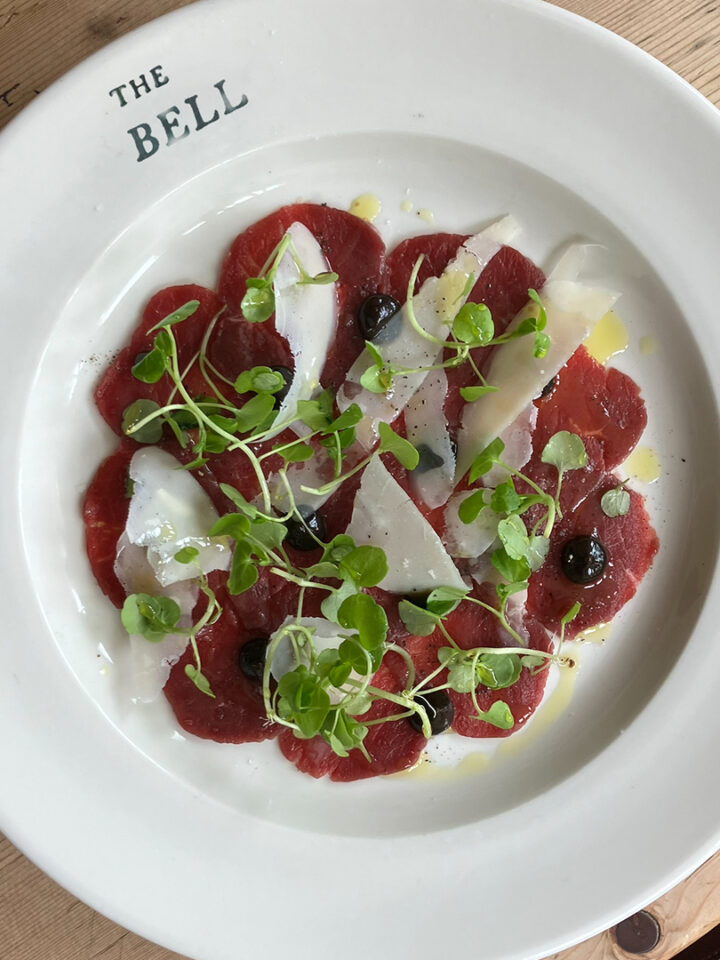Autumnal seasonal highlights always include venison from our sister farm in Staffordshire. They are the first and largest red deer herd to be certified by the Soil Association. The deer are raised on an organic forage-based diet in ancient parkland, maturing slowly and naturally as they would in the wild. Executive Chef Alan shares the recipe for one of our most popular dishes.
Ingredients
Serves 4
For the pickled walnut ketchup
To serve
Prepare the venison the day before. Break down the haunch into separate muscles and remove any sinew and silverskin (or ask your butcher to do this for you). Wrap the venison in greaseproof paper and put it in the freezer overnight.
The next day, an hour before you want to serve, remove the venison from the freezer and place into the refrigerator.
To make the pickled walnut ketchup, place all the ingredients into a small saucepan, including the juice from the pickled walnut jar, and cook until reduced to half its original volume. Carefully transfer to a blender, blend until smooth then pass through a fine sieve or conical chinois. Store in a clean jar or squeezy bottle.
When the venison has been in the fridge for an hour, remove greaseproof paper and slice the semi-frozen meat as thinly as possible. Lay directly onto serving plates and leave to defrost fully at room temperature for 5-10 minutes.
Season generously with sea salt, Léoube olive oil and cracked black pepper. Top with blobs of the pickled walnut ketchup, fresh watercress, and Parmesan shavings.


We asked our Executive Chef Alan, what his top tips would be for serving and pairing with venison this autumn.
What’s exciting about working with organic, homegrown venison as a chef?
Venison is a beautiful product to work with. The mild gamey flavour, which has been expertly hung and butchered by the team at our Wootton estate, is always one of the first ingredients that we look to as the autumn draws in.
What would be your perfect drink to accompany this dish?
A blackberry Negroni or decent glass of Claret.
What is your top tip when cooking with venison
Obviously in this case we aren’t cooking the venison, however if you are, it is crucial that you do not overcook it, pan roasted with plenty of foaming butter, garlic, thyme and juniper, then rested until nice and pink throughout is the way forward.



